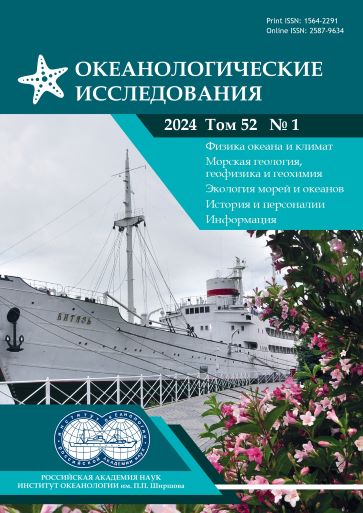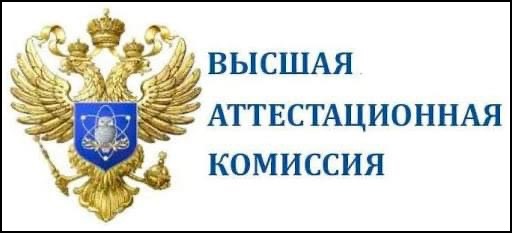СОВРЕМЕННОЕ ЭКОЛОГИЧЕСКОЕ СОСТОЯНИЕ МОРСКИХ ВОД У СЕВЕРО-ЗАПАДНОГО ПОБЕРЕЖЬЯ КРЫМА
Аннотация
В прибрежных морских водах Западного Крыма в июне–июле 2023 г. исследовались стандартные гидролого-гидрохимические параметры и загрязнение нефтяными углеводородами (НУ), анионными детергентами (АПАВ) и тяжелыми металлами. Показано отсутствие существенных изменений гидрологических показателей из-за прорыва плотины Каховского водохранилища. Соленость воды изменялась в узком диапазоне 17.27–18.71 ‰, кроме небольшого участка в кутовой части Каркинитского залива (24.27 ‰). Стандартный расчет индекса загрязнения вод (ИЗВ) показал преобладающее загрязнение морских вод НУ, концентрация которых была равна или превышала установленный норматив ПДКНУ = 0.05 мг/дм3 в 87 % отобранных проб. Наиболее высокие значения (0.36 и 0.50 мг/дм3, 7–10 ПДК) были зафиксированы в Каркинитском заливе на небольшом удалении от берега. Содержание детергентов и тяжелых металлов было невысоким. Кислородный режим в целом находился в пределах нормы на всей исследуемой акватории, за исключением кутовой части Каркинитского залива с дефицитом растворенного кислорода до 27 %. Показана разница в гидрохимическом состоянии Каркинитского и Каламитского заливов Западного Крыма. По величине индекса загрязнения воды Каламитского залива были охарактеризованы как «чистые», а Каркинитского залива – как «умеренно загрязненные».
Литература
- Иванов В. А., Совга Е. Е., Хмара Т. В., Зима В. В. Термохалинный режим акватории Каркинитского залива и экологические последствия природопользования // Экологическая безопасность прибрежной и шельфовой зон моря. 2018. № 3. С. 22–33.
- Качество морских вод по гидрохимическим показателям: Ежегодник-2021 // Под общей ред. А. Н. Коршенко. Москва: ФГБУ «ГОИН», 2023. 248 с.
- Малахова Л. В. Современный уровень загрязненности хлорорганическими соединениями донных отложений украинского шельфа Чёрного моря // Экологическая безопасность прибрежной и шельфовой зон моря. 2012. № 26. С. 64–73.
- Пухтяр Л. Д., Ильин Ю. П., Белокопытов В. Н. Сезонная и пространственная изменчивость термохалинной структуры вод Каркинитского залива // Экологическая безопасность прибрежной и шельфовой зон и комплексное использование ресурсов шельфа. 2003. № 8. С. 48–63.
- Пухтяр Л. Д. Сезонные распреснения и осолонения вод Каркинитского залива // МГЖ. 2007. № 4. С. 24–39.
- Северо-западная часть Черного моря: биология и экология / Под ред. Ю. П. Зайцева, Б. Г. Александрова, Г. Г. Миничевой. Киев: Наукова Думка, 2006. 701 с.
- Система Черного моря / Под ред. А. П. Лисицына. Москва: Научный мир, 2018. 808 с.
- Совга Е. Е., Орехова Н. А., Хмара Т. В. Термохалинная и гидрохимическая структура вод акватории Каркинитского залива в современный период // Процессы в геосредах. 2022. № 2 (32). С. 1617–1624.
- Гiдрологiчнi та гiдрохiмiчнi показники стану пiвнiчно-захiдного шельфу Чорного моря: довiдковый посiбник / Вiдповiд. ред. I. Д. Лоева, I. Г. Орлова, М. Ю. Павленко, В. В. Украинский та iн., Киiв: КНТ, 2008. 616 с.
- Korshenko A. Total petroleum hydrocarbons (TPHs). In: State of the Environment of the Black Sea (2009–2014/5). Publications of the Commission on the Protection of the Black Sea Against Pollution (BSC), 2019, Istanbul, Turkey. P. 92–100.
Передача авторских прав происходит на основании лицензионного договора между Автором и Федеральным государственным бюджетным учреждением науки Институт океанологии им. П.П. Ширшова Российской академии наук (ИО РАН)













